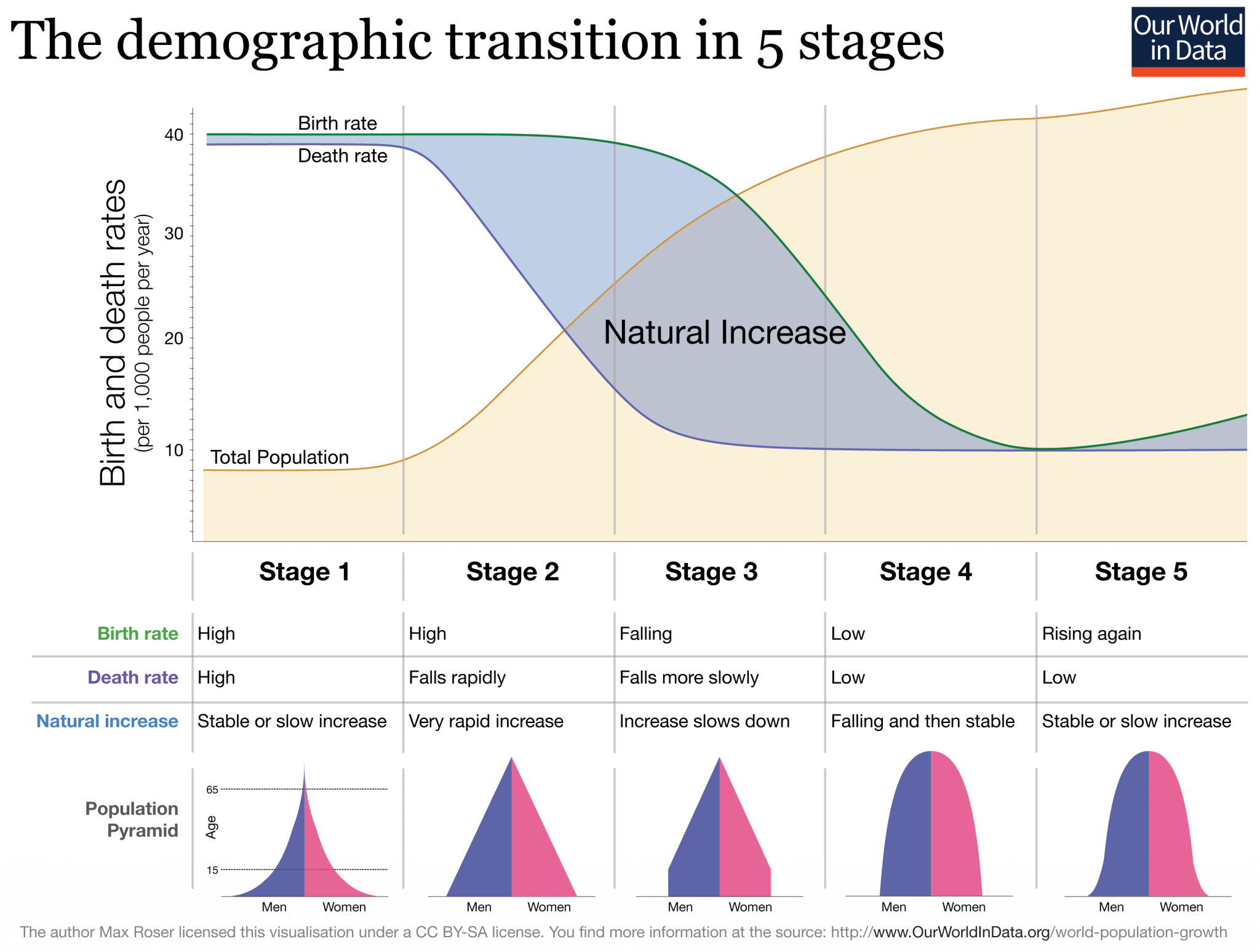The demographic transition model (DTM) is a vital tool for understanding the evolution of populations over time. It explains how countries transition from high birth and death rates to low birth and death rates, resulting in a gradual shift in population dynamics. This article will delve into the stages of demographic transition, provide case studies, and analyze the implications for societies around the world.
Understanding the Demographic Transition Model
The demographic transition model is typically divided into five stages, each characterized by distinct patterns of birth and death rates. These stages illustrate how a society’s demographic profile changes as it develops economically and socially.
Stage 1: Pre-Transition

In the first stage, both birth rates and death rates are high, leading to a stable population. Factors contributing to these high rates include:
- Lack of access to healthcare
- High infant mortality rates
- Limited education about family planning
- Economic reliance on agriculture and large families
Examples of countries that historically fell into this category include pre-industrial societies. Today, no country exists entirely in this stage, although some remote regions may exhibit similar characteristics.
Stage 2: Early Transition

As countries begin to develop, they enter Stage 2, where death rates decline significantly due to improvements in healthcare, sanitation, and nutrition. Birth rates remain high, leading to rapid population growth. Key features of this stage include:
- Increased access to medical care
- Improvements in agricultural productivity
- Decreased infant mortality rates
Countries like Afghanistan and some sub-Saharan African nations are currently experiencing this stage, with high fertility rates coupled with declining mortality rates, resulting in substantial population growth.
Stage 3: Late Transition
In Stage 3, birth rates begin to fall as societies become more urbanized and educated. Factors contributing to this decline include:
- Increased female participation in the workforce
- Greater access to contraception
- Shift in societal values towards smaller families
Countries like Brazil and India are examples of nations in this stage, where the population is still growing but at a slower pace due to declining birth rates.
Stage 4: Post-Transition

Stage 4 is characterized by low birth and death rates, leading to a stable population. This stage is often associated with developed countries. Key characteristics include:
- High levels of education and employment
- Access to reproductive health services
- Changing family structures and lifestyles
Countries such as the United States, Canada, and many Western European nations exemplify this stage, where population growth is minimal, and some areas even experience decline.
Stage 5: Declining Population
Some demographers propose a fifth stage, where birth rates fall below death rates, leading to a declining population. This stage is often seen in countries with advanced economies. Characteristics include:
- Population aging
- Economic challenges related to a shrinking workforce
- Increased dependency ratios
Japan and Germany are prime examples of countries facing the challenges of Stage 5, as they grapple with low fertility rates and aging populations.
Implications of Demographic Transition

The demographic transition has profound social, economic, and political implications. Understanding these changes is crucial for policymakers and researchers alike.
Economic Growth and Development
As countries move through the demographic transition, economic growth often accelerates. This growth can manifest in various ways:
- Increased labor supply in the early stages
- Higher productivity as education levels rise
- Greater consumption patterns in developed nations
However, countries in Stage 5 may face economic challenges due to a shrinking workforce, necessitating innovative approaches to sustain economic stability.
Healthcare and Social Services
Population changes necessitate shifts in healthcare and social services. For example:
- Increased demand for maternal and child health services in Stage 2
- Greater need for geriatric care in Stage 5
- Healthcare policy adjustments based on changing population dynamics
Countries must adapt their health systems to meet the evolving needs of their populations effectively.
Environmental Impact
Demographic changes also have significant environmental implications:
- Increased resource consumption as populations grow
- Urbanization leading to habitat destruction
- Need for sustainable practices in response to aging populations
Policymakers must consider environmental sustainability as they navigate the complexities of demographic transitions.
Case Studies: Successful and Challenging Transitions
Examining specific countries can provide valuable insights into the diverse experiences of demographic transition.
Successful Transition: South Korea
South Korea offers a compelling case study of a successful transition:
- In the 1960s, South Korea had high birth and death rates.
- Through investments in education, healthcare, and women’s empowerment, the country moved to Stage 3 by the 1980s.
- Today, South Korea faces challenges associated with Stage 5, including a declining birth rate and an aging population.
This transition has led to significant economic growth, but it has also necessitated policy adjustments to address emerging challenges.
Challenging Transition: Sub-Saharan Africa
In contrast, many countries in Sub-Saharan Africa face challenges in transitioning through the demographic stages:
- High birth rates persist due to cultural norms and limited access to education and healthcare.
- While death rates have declined, the region continues to grapple with high infant mortality and disease burden.
- Understanding and addressing these challenges are crucial for sustainable development.
Efforts to improve education, healthcare access, and economic opportunities are essential for facilitating demographic transition in this region.
Conclusion: The Path Forward
The demographic transition model provides a framework for understanding how populations change over time and the implications of these changes. As countries navigate the complexities of each stage, it is essential to consider:
- The need for policies that address the unique challenges of each demographic stage.
- The importance of sustainable practices to mitigate environmental impacts.
- Investments in healthcare, education, and economic opportunities to facilitate successful transitions.
As the world continues to change, the lessons learned from demographic transitions will be vital in shaping policies that promote sustainable development and improve the quality of life for future generations. Understanding these transitions is not just about numbers; it is about people, their lives, and their futures.